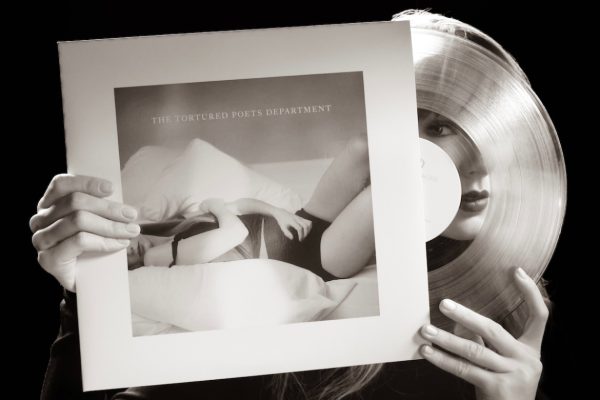“Voice of the Lake” Highlights Musicianship, Environmental Advocacy
Voice of the Lake, an oratorio for Lake Erie composed by former Director of the Composition Department at the Cleveland Institute of Music Margaret Brouwer, OC ’62, exists at the intersection of environmentalism, musicality, technology, and community. The piece, written in collaboration with poet and Cleveland native David Adams, highlights both the beauty and the problematic nature of living in concert with Lake Erie.
“Voice of the Lake … brings to life the struggle between the recreational and natural joys of Lake Erie and the commercial, agricultural, and political issues that threaten its ecological health,” Brouwer writes on her website.
For the premiere performance, which took place Sunday afternoon at the Breen Center for the Performing Arts in Cleveland, the Oberlin Musical Union joined Brouwer’s Blue Streak Ensemble, the Cleveland Institute of Music Children’s Choir, and soloists Angela Mitchell, Merav Eldan, Brian Skoog, and Bryant Bush. The ensemble was conducted by Maestro Domenico Boyagian, the music director of Cleveland Opera Theater and Heights Chamber Orchestra.
The Oberlin Musical Union’s director Gregory Ristow, OC ’01, who prepared the community choir for the performance, was pleased when Brouwer reached out to him saying that she was composing the piece and wanted an Oberlin choir to be a part of it. The Musical Union, the second-oldest continuing choral tradition in the United States, has united Oberlin students and community members throughout its 180 years, a facet of the ensemble that Ristow hoped would highlight the community-based aspects of Brouwer’s oratorio.
“Thinking about the piece, I thought it made a lot [of] sense for Musical Union,” Ristow said. “Musical Union is unique among our ensembles in that it’s about 50 percent College [and Conservatory] students and about 50 percent community members. It’s a group that has a lot of ties to the local area in ways that our other musical ensembles don’t.”
A much-repeated refrain in the piece’s second movement is that “the citizens come together” to care for the lake and reflect upon their relationship with this natural resource, and this motif is reflected by the choir’s community-based nature as well. All singers are welcome in Musical Union, regardless of age and experience, and they do not have to audition. Some performers on Sunday were singing with the choir for the first time, while others have been with Musical Union for over 40 years.
As Conservatory senior and Musical Union member William Bolles-Beaven said, “I think one of the beautiful things about Musical Union is how we’re all gathered for a common purpose, and that everyone in that context is equal.”
By the start of the semester, Ristow said, Voice of the Lake was fairly finalized — and luckily, Brouwer was open to modifying the composition based on what would sound best for the choir. In the final performance, he explained, the choir was conducted by Boyagian, and he said was new and healthy for the ensemble to be conducted by someone other than him. It was a novel performance in many ways — many members the group had never premiered a composition before.
The oratorio is split into four movements — “Part I: At the Lake,” “Part II: The Public Hearing,” “Part III: The Dream,” and “Part IV: Sunrise on the Lake.” In each, the music served to represent facts of community life. The libretto includes snippets from newspaper articles and transcripts from public records, juxtaposed with stirring poetry about the natural beauty of the lake. Ristow described it as “specific,” adding he was not sure if it would be performed again. “It’s kind of cool to be part of a piece that’s written for a moment in time,” he said.
The first movement illustrated a lake through sound, featuring a wave-like vibrato of the instrumental. As described on Brouwer’s website, “The choir sings of the constant motion of the bubbling waves swirling the sand from rock to stone.”
The voices of children singing created nostalgia, and brought back memories of childhood lakeside games. Similarly, the song of a fisherman conducting his livelihood on a lake created a warm atmosphere of a simpler time, away from the bustle of city life.
The second movement was a natural transition, showcasing invasive human interference into a once chaste resource. The movement showcased a public hearing between the U.S. Army Corps of Engineers and affected citizens, including Congresswoman Marcia Fudge. The two sides locked horns on stage, conflicted between the environmental damage of dumping the dredged Cuyahoga River bottom into the beloved lake of the people, and the economic benefit the Corps would claim from this behavior.
If the brilliant music hadn’t already created enough angst in the hearts of audience members, in the third movement, a visual projection showcasing run-off and an increasingly polluted lake accompanied by mezzo-soprano Merav Eldan’s lullaby only further solidified the image: the impending death of a once-thriving life force.
The final movement of the show created a poignant atmosphere in the room. The soloists and children sang in harmony, expressing a deep longing for a modest desire: clean water. While sorrow was evident in the message Voice of the Lake communicated, there was an air of disgust expressed towards the economic greed of organizations that profit from environmental degradation. While the responsibility of society in the indirect perpetuation of natural resource destruction was missing — glossed over some of the complexities of the issue at hand — the show brought light to an issue often sidelined, in a dynamic and interdisciplinary manner.
“It brought parts of a community into contact that may not have otherwise met, for the purpose of bringing attention to an issue facing the community,” Bolles-Beaven said. “Taking that as my yardstick, I think the performance was a success.”









